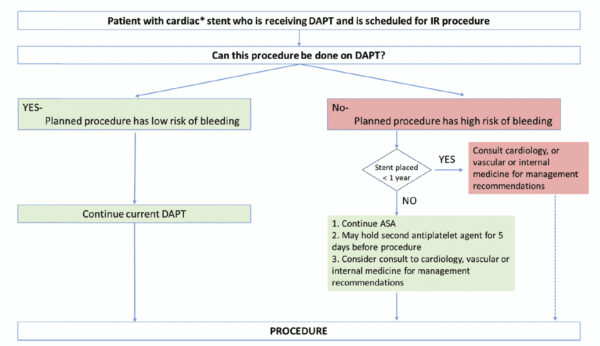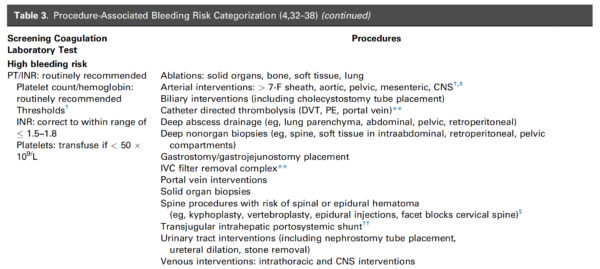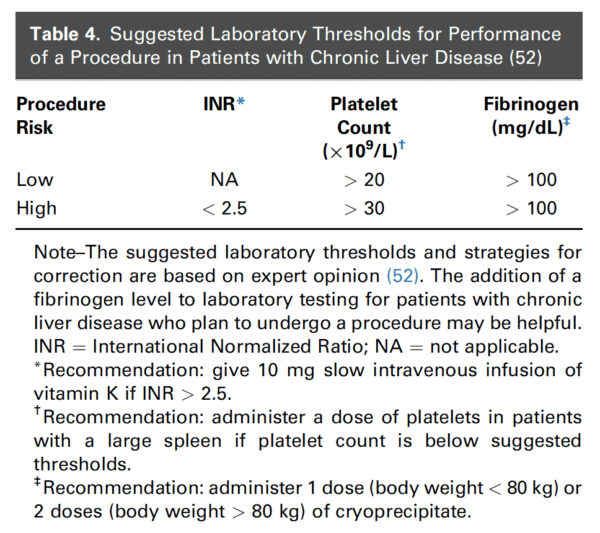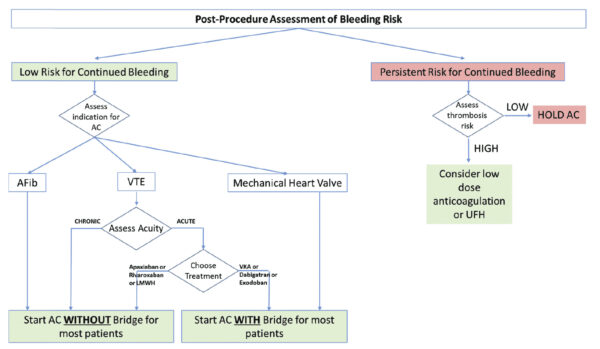This blog summarizes the 2019 Society of Interventional Radiology (SIR) for Periprocedural Management of Image-guided Procedures with regards to thrombocytopenia, coagulopathies, antiplatelets and anticoagulation. The SIR guidelines are summarized as follows:
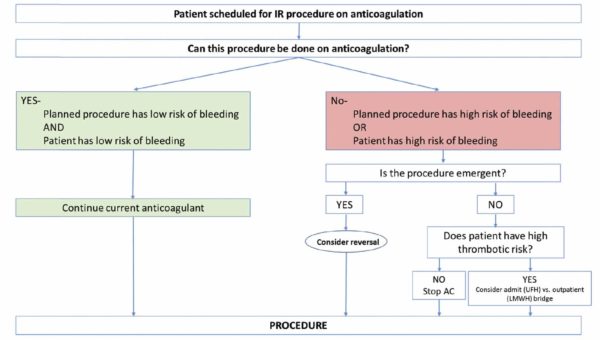
- Anticoagulation with heparin, LMWH, fondaparinux, argatroban, warfarin, DOAC, clopidogrel, ticagrelor and prasugrel should not be withheld prior to low-risk procedures
Figure 1: Anticoagulation Management before Procedures
Figure 2: Dual Antiplatelet Therapy before Procedures
- INR<3 for arterial interventions and tunneled catheter placement
- Screening PT/INR and PTT is not routinely recommended for low risk procedures unless patients have risk factors for bleeding or if they are receiving warfarin or heparin
- Lumbar puncture should be treated as a high risk procedure
Table 1: Platelet and Coagulation Thresholds for Low Risk Procedures
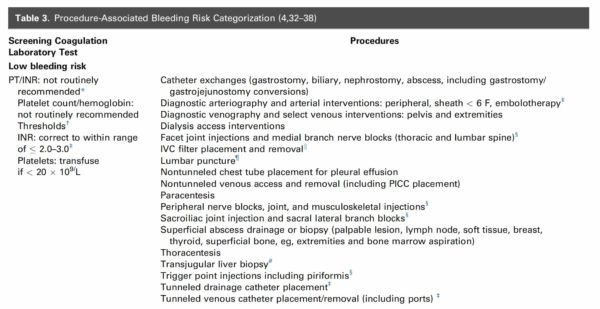
- INR <1.5-1.8 prior to lumbar puncture
- INR>50K prior to lumbar puncture
Table 2: Platelet and Coagulation Thresholds for High Risk Procedures
- Invasive procedures should not be performed in cirrhotic patients with DIC and hyperfibrinolysis
Table 3: Platelet and Coagulation Thresholds for Procedures in Cirrhotic Patients
Figure 3: Post-Procedure Anticoagulation Use Based on Bleed Risk
MEDICATIONS WITHHOLD TIME PRIOR TO HIGH RISK PROCEDURES
Heparin 4-6 hours
LMWH prophylactic 12 hours
LMWH therapeutic 24 hours
Fondaparinux 2-3d (CrCl>50) and 3-5 d (CrCl<50)
Argatroban 4-6 hours
Warfarin 5 days (INR<1.8)
Apixiban 48 hours (CrCl>50) or 72 hours (CrCl<50)
Dabigatran 48 hours (CrCl>50) or 72 hours (CrCl<50)
Edoxaban 48 hours
Rivaroxaban 48 hours (CrCl>30) or 72 hours (CrCl<30)
Clopidogrel and Ticagrelor 5 days
Prasugrel 7 days
ASA None
NSAIDS None
SUMMARY OF THESE GUIDELINES
- Low risk procedures (paracentesis, thoracentesis, central lines, dialysis catheter placement, arterial interventions with catheters <6F, and chest tube placement) can be performed under full anticoagulation or use of all antiplatelets including dual antiplatelet therapy
- Low risk procedures can be performed for platelet count >20K or if INR<3.0 without blood product administration
- High risk procedures (lumbar puncture and arterial interventions with catheters >7F) can be performed for platelet count >50K or if INR<1.5-1.8 without blood product administration
- Anticoagulants and thienopyridines (clopidogrel, ticagrelor and prasugrel) should be held for a period of time prior to performing high risk procedures
- Fibrinogen levels should be >100 mg/dL prior to initiation of low risk or high risk procedures

